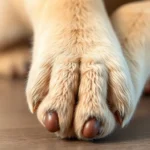
If you’ve ever found your dog munching on Play-Doh, you might be feeling a mix of concern and confusion. Many pet owners face the unsettling situation of their furry friends ingesting foreign substances, and understanding the implications can be essential for their health. In this post, we’ll dive deep into the matter, specifically addressing the question: my dog ate play doh vet answer. We’ll explore the ingredients of Play-Doh, the symptoms of ingestion, what steps to take next, and how to prevent this from happening in the future.
Understanding Play-Doh
What is Play-Doh?
Play-Doh is a popular modeling compound used primarily by children for arts and crafts. Its texture allows for easy manipulation, making it a favorite among young creators. The ingredients commonly found in Play-Doh include:
- Flour: Acts as the base.
- Water: Provides moisture.
- Salt: Adds flavor and helps preserve the mixture.
- Boric Acid: Used as a hardening agent and preservative.
- Coloring Agents: Various dyes give Play-Doh its vivid colors.
While these ingredients may seem harmless, they can still pose risks to your dog if ingested.
Is Play-Doh Toxic to Dogs?
The good news is that Play-Doh is generally considered non-toxic to dogs. However, that doesn’t mean it’s safe for them to consume. Dogs can have varying reactions to ingesting Play-Doh based on their size, health, and the amount consumed.
The primary concerns include:
- Gastrointestinal Blockages: If your dog eats a large quantity, it could lead to blockages in their digestive tract.
- Salt Poisoning: Given that Play-Doh contains salt, excessive ingestion can lead to salt toxicity, which can be harmful, especially in small dogs.
- Boric Acid: While the amount in Play-Doh is minimal, ingestion may still cause irritation or other adverse effects.
It’s essential to monitor your dog for any unusual behavior after ingestion, as reactions can vary.
Symptoms of Play-Doh Ingestion
Common Symptoms to Observe
If your dog has eaten Play-Doh, several symptoms may arise. Here are some general signs to watch for:
- Vomiting: This is one of the body’s natural responses to eliminate unwanted substances.
- Diarrhea: Changes in stool consistency can indicate digestive distress.
- Lethargy: A decrease in energy levels can be a sign of discomfort or illness.
- Abdominal Pain: Dogs may show signs of discomfort by whining or refusing to eat.
In the context of Play-Doh ingestion, you may also notice:
- Excessive Thirst: This can be a reaction to salt content.
- Changes in Appetite: Your dog may refuse to eat or drink.
When to Seek Veterinary Care
If your dog exhibits any of the following signs, it’s crucial to seek veterinary care immediately:
- Persistent Vomiting: If your dog cannot keep food or water down.
- Severe Lethargy: If your dog is unusually tired or unresponsive.
- Signs of Pain: If your dog seems to be in distress or is whining.
- Abdominal Swelling: This could indicate a blockage.
Monitoring your dog for symptoms within the first few hours post-ingestion is essential. If symptoms persist or worsen, do not hesitate to contact your veterinarian.
What to Do If Your Dog Eats Play-Doh
First Steps to Take
If you discover that your dog has eaten Play-Doh, the initial steps are crucial:
- Stay Calm: Your dog can sense your stress, which may exacerbate their anxiety.
- Check Their Mouth: If possible, check your dog’s mouth for any remaining Play-Doh. If you can see it, gently remove it.
- Monitor Behavior: Keep an eye on your dog for any signs of distress or unusual behavior.
Home Remedies and Care
When it comes to home remedies for Play-Doh ingestion, caution is key. In general, it’s advisable to avoid any home remedies unless specifically advised by your veterinarian.
- Hydration: Ensure your dog has access to fresh water, especially if they are showing signs of dehydration.
- Avoid Inducing Vomiting: Unless directed by a veterinarian, do not attempt to induce vomiting at home, as this could lead to choking or further complications.
If you notice any concerning symptoms, consult your veterinarian rather than relying on home remedies.
Veterinary Diagnosis and Treatment
What to Expect at the Vet
If you take your dog to the veterinarian, you can expect a thorough examination. The vet will likely:
- Ask About Symptoms: Be prepared to provide details about when your dog ingested the Play-Doh and any symptoms observed.
- Conduct a Physical Examination: This helps assess your dog’s overall condition.
Treatment Options Available
The treatment your veterinarian recommends will depend on the severity of the situation. Possible treatments include:
- Inducing Vomiting: If your dog has just eaten Play-Doh, the vet may induce vomiting to prevent further absorption.
- IV Fluids: If your dog is dehydrated or experiencing gastrointestinal distress, fluids may be necessary.
- Medications: Antiemetics or other medications may be prescribed to manage symptoms.
Follow-up care may include monitoring your dog at home and returning for additional check-ups if symptoms persist.
Prevention Tips
Keeping Play-Doh Out of Reach
Preventing your dog from accessing Play-Doh is the best way to avoid ingestion. Here are some tips:
- Store Play-Doh Properly: Keep it in a cabinet or shelf that is out of your dog’s reach.
- Designate Play Areas: Create specific areas for children to play with crafts that are separate from where your dog roams.
Educating Family Members
Educating your family, especially children, about pet safety is crucial. Teach them to:
- Be Mindful: Encourage them to be aware of where they leave their crafts.
- Play Responsibly: Teach responsible play, ensuring that pets are not around small items or potentially harmful materials.
By fostering a safe environment, you not only protect your dog but also promote responsible play for children.
Conclusion
Ingesting Play-Doh can be a concerning situation for any dog owner. Understanding the ingredients, potential symptoms, and proper responses can help you navigate this challenge with confidence. Remember, if you find yourself in this situation, consulting a veterinarian is always the best course of action. They can provide tailored advice based on your dog’s specific needs and circumstances.
Feel free to share your experiences or tips in the comments below. Your insights could be invaluable to fellow pet owners navigating similar situations.
This comprehensive guide aims to address all aspects surrounding the ingestion of Play-Doh by dogs while providing essential information and support for pet owners. If you have further questions or concerns, always reach out to your veterinarian for professional advice.









